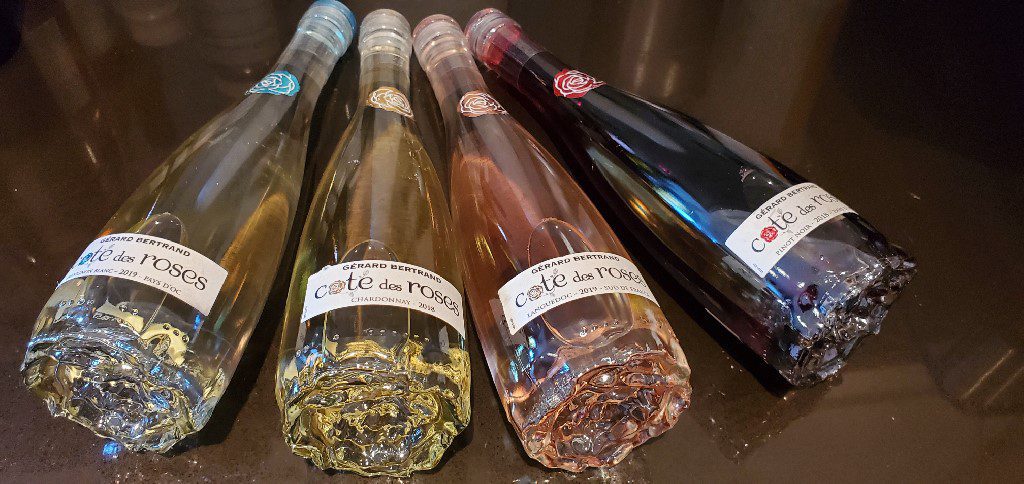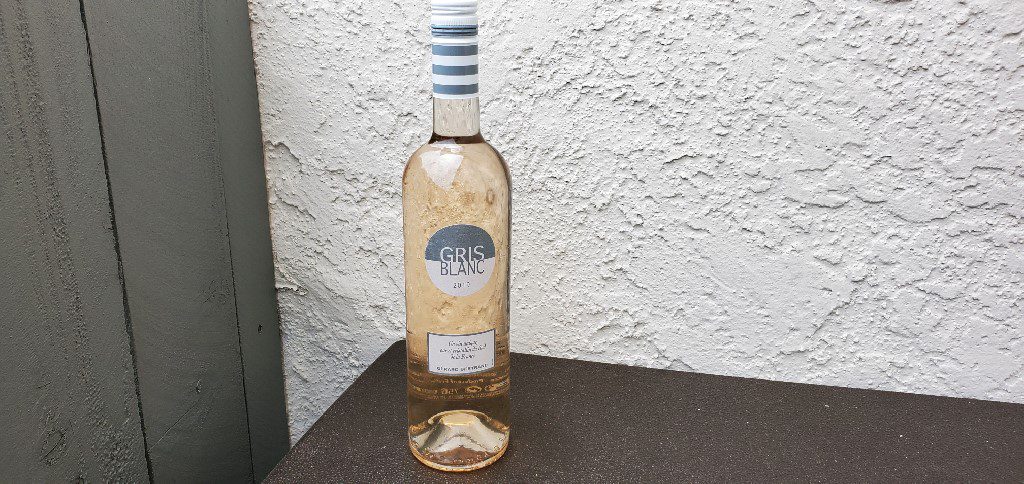
28 Jul The trend-setting Gérard Bertrand, ‘King of Languedoc’
On July 14th, for Bastille Day, Gérard Bertrand hosted a free fundraiser on Facebook Live to benefit World Central Kitchen. In addition to raising money during this event, Bertrand donated $50,000 to World Central Kitchen. In addition to helping raise money, Gérard Bertrand is a trend setter, not a follower, as I wrote about in the Napa Valley Register and share here.
The wine industry, like any consumer product, is subject to trends. In the world of wine, trends serve as an indicator of what people are drinking, from regions to varieties and from production methods and styles. Figuring out the next trend is not always easy to foresee but that is not an issue for Gérard Bertrand. He is not one who looks to follow trends but rather sets the trends.
I first met Bertrand four years ago while visiting the Languedoc-Roussillon wine region. Known locally as the King of the Languedoc, Bertrand has 16 wine estates in the region. His philosophy is to be in harmony with nature and he believes in l’art de vivre (the art of living), which links wine, gastronomy, culture and art. These are at the heart of the company’s DNA.
Bertrand started working with his father in 1975 when he was 10 years old. He is now in his 40th harvest and his enthusiasm has not ceased. He credits his father for giving him a love of the south of France and also for teaching him the art of blending.
Today, he enjoys spending time blending as it provides an opportunity to make a masterpiece. “When you make blends, you feel alive.” With more than 60 different grape varieties in the south of France, the largest wine-producing area in the world, Bertrand sees the region as a playground that enables him to constantly think outside of the box.
As a winemaker, Bertrand developed an interest in biodynamics. He first discovered homeopathic medicine when he was 22 and began to understand the benefits of natural resources. After reading Rudolf Steiner, Bertrand saw a connection between the principles of biodynamics and homeopathy. He began by converting four acres to biodynamics and saw a difference after three years. He has since converted all 2,000 acres to biodynamic farming and is the leader in the world for organic and biodynamic production.
Last year, I wrote about his estate, Clos du Temple, located in Cabrières, the birthplace of rosé. From this 20-acre property, Cinsault, Grenache, Syrah, Mourvèdre and Viognier are blended to make a single rosé. While most rosés are meant to be drunk within a couple years of release, Clos du Temple is a wine that is meant to be aged, just one of many out-of-the-box concepts by Bertrand.
While Clos du Temple is a wine for collectors, his Côte des Roses is at the other extreme. The Languedoc appellation stretches along the Mediterranean coast from the Spanish border as far as the city of Nîmes, along the foothills of the Montagne Noire and the Cévennes.
Offering quality wines of value, Côte des Roses celebrates the Mediterranean lifestyle. What makes this wine unique is the original bottle whose base is in the shape of a rose. Giving a bottle of wine as a gift is like giving someone a rose. What is also distinctive about the Côte des Roses bottle is that the closures are glass, not cork.
Côte des Roses 2019 Rosé, Languedoc
A blend of Grenache, Cinsault and Syrah, the wine is a soft, pale pink color. The wine is fresh with notes of summer fruits, red currant, grapefruit and roses. Côte des Roses has now extended the line with additional grape varieties. Now, instead a giving a single rose, you can give someone a bunch of roses.
Côte des Roses 2019 Sauvignon Blanc, Languedoc
Sauvignon Blanc can be a challenge to grow in the south of France. But Bertrand has found distinctive terroir along the Mediterranean Sea and close to the mountains near Carcassonne. The grapes from along the sea are picked early whereas the grapes near the mountain have a longer vegetative cycle. Ten percent of the wine is aged in French oak and the resulting wine fits between Sancerre and New Zealand in style. Crisp and fresh, the wine has notes of citrus, pineapple, peach, black currant, pear and flowers. The wine is precise on the palate with minerality and salinity on the finish.
Côte des Roses 2018 Chardonnay, Languedoc
This full-bodied Chardonnay, of which 70 percent is aged in French oak, has an intense nose of peach, passion fruit, citrus and mint. On the palate, bright acidity is followed by a creamy mid-palate and a mineral finish.
Côte des Roses 2018 Pinot Noir, Pays d’Oc
Sourced from vineyards in the mountains, this Pinot Noir has fresh aromas of wild raspberry, cherry, violets and spice. The wine is well-balanced between light and refreshing and velvety with silky tannins.
Being located in the south of France, rosé is drunk on a daily basis. While Gérard has an expensive rosé meant to be aged as well as quality rosé of value, he also produces one of the palest rosés in the world, Gris Blanc.
Gérard Bertrand 2018 Gris Blanc Rosé, Pays d’Oc
The Grenache Gris sourced from the Tautavel region in Roussillon is typically used to make a fortified wine. Bertrand chose instead to make a rosé. A pale, pale pink color, the wine is closer to the color of sherry. Delicate red fruit aromas give way to minerality and on the palate, the wine is fresh and light, perfect to enjoy with oysters.
A blend of history, tradition and modernity
Beyond rosés and artful glass bottles, Bertrand has also produced a line of wines that come in ceramic bottles. The Art de Vivre natural clay bottles pay homage to the ancient amphorae once used by the Greeks and Romans to transport wine. The benefit to a clay bottle is that it protects the wine from the light, maintaining the quality of the wine for a longer period. Paying tribute to the people who provided these indigenous grapes, the image on the clay bottle is of a Greek God with a cup that was used in celebrations during ancient times. The Art de Vivre wines blend history and tradition with modernity.
Art de Vivre 2018 Clairette du Languedoc Adissan, AOP Clairette du Languedoc Adissan
The white varietal Clairette shares its name with the appellation and this grape has been grown in Languedoc since Roman antiquity. The wine is a straw yellow color with delicate fruity aromas of peaches, apricot, pears, mango, orange, pineapple and plums. On the palate, it is fresh and elegant with a round mid-palate and good acidity and minerality.
Art de Vivre 2015 Rouge AOP Languedoc
A blend of Syrah, Grenache and Mourvèdre, the wine spends 12 months in French oak and is then aged in the clay bottle for two years. It has lovely aromas of ripe fruits such as cherry, raspberry, blackberry and blueberry, as well as garrigue and spice. The tannins are mild on this smooth wine that has an elegant and long, silky finish.
Biodynamics, custom glass bottles with roses, the palest rosé, glass closures and ceramic bottles are some of the Bertrand’s trend-setting actions. And he is not stopping there. With a drive to reinforce the biodiversity on the planet, Bertrand not only takes care of nature, but also takes care of people as he is taking action while the world deals with COVID-19 and its effects on our economy.
Bertrand has joined forces with nonprofit World Central Kitchen (WCK), founded by José Andrés. Since its founding, WCK has provided more than 20 million chef-prepared meals for those in need. Today, WCK is working across America to safely distribute individually packaged, nutritious meals to those who need support. WCK is active in 200 cities and has served more than 9 million fresh meals in response to the COVID-19 pandemic. Bertrand is donating $50,000 to WCK, and on Bastille Day on July 14, he is hosting a virtual tasting with José Andrés that is open to the public with hopes to raise more money.
In addition, the 17th annual Jazz Festival at l’Hospitalet in the south of France will take place at the end of July. To comply with safety regulations, they are reducing the number of tickets available. Additionally, Bertrand is giving out dozens of tickets to first-responders so that they can relax and enjoy after working so hard.
Read the original story in the Napa Valley Register.
Discover more from Please The Palate
Subscribe to get the latest posts sent to your email.





